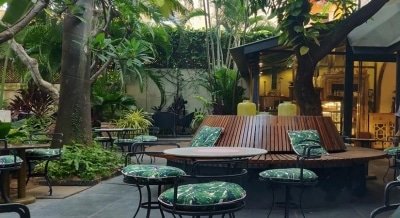Meetu Akali, Founder, Studio Momo shares tips to make your house an eco-friendly home:
Planning and designing homes<br>It’s extremely vital to ensure that there is maximum usage of natural light and natural ventilation. Whenever one is planning or redesigning homes, you can introduce elements like a courtyard, terrace gardens, roof gardens, vertical green walls, and water bodies. This way one can reduce the internal temperature of the house by at least 2-3 degrees and create the effect of micro-climate. These sustainable practices go a long way in reducing carbon footprints and the usage of electronics.
Natural cleaning products<br>Using harmful chemicals to clean is equally bad for the environment as for us. While washing them away you are simply putting them back into the water supply. That means water needs to undergo the purification process before it is safe to use again. Sometimes these chemicals get washed into the water bodies, making it unpotable and unsafe for animals. Conventional cleaning products pose risks such as chemical burns to the skin and eyes. Green cleaners aren’t corrosive and meet strict standards regarding inhalation toxicity, combustibility, and skin absorption.
Make your compost <br>Overuse of chemical fertilizers can lead to leaf scorch, where vegetation withers and dies prematurely resulting in the acidification of soil, rendering its inorganic and mineral deficient. Such chemical effluents contaminate the groundwater reserves and give rise to severe illnesses in humankind as well as animals. If we can all cultivate non-toxic, fresh greens in our gardens by using natural compost as fertilizer, we have already taken a big step towards sustainable living.
Fertilizer made of compost improves the quality of soil by restoring moisture, air, and nutrients- it also reduces the amount of water required for gardening, thereby helping conserve the precious resource. Comprising dry leaves, cut grass, and organic kitchen waste, compost minimizes the release of methane gas in the environment and replenishes the nutrients in the soil, which is essential for the optimal growth of plants. Further, you can use this compost in creating your kitchen garden by growing vegetables and more.
Use recycled products <br>Recycling helps to reduce energy usage, reduce the consumption of fresh raw materials, air and water pollution (from landfilling) by reducing the need for conventional waste disposal, and reduces greenhouse gas emissions. Not only recycle, but you can upcycle home furniture by refurbishing it. One can repolish it, change the color, and create an entirely new look. So next time when you can need to give your house a fresh look, consider upcycling furniture rather than giving it away. A fresh coat of paint or polish can go a long way.
Rainwater Harvesting<br>An alternative way of storing rainwater during the monsoon season for individual homes are rooftop rainwater harvesting, or a rain barrel/cistern that. This is an essential feature of sustainable homes. However, please bear in mind that the rainwater should never be used without being treated.
Install solar panels <br>Solar panels an essential feature for any eco-home, not only provides clean electricity but certainly makes it a long-term investment with low maintenance costs.
<br>(IANSlife can be contacted at ianslife@ians.in)
–IANS<br>lh/tb/sdr/
